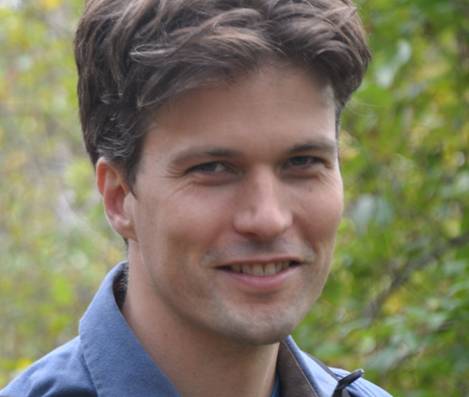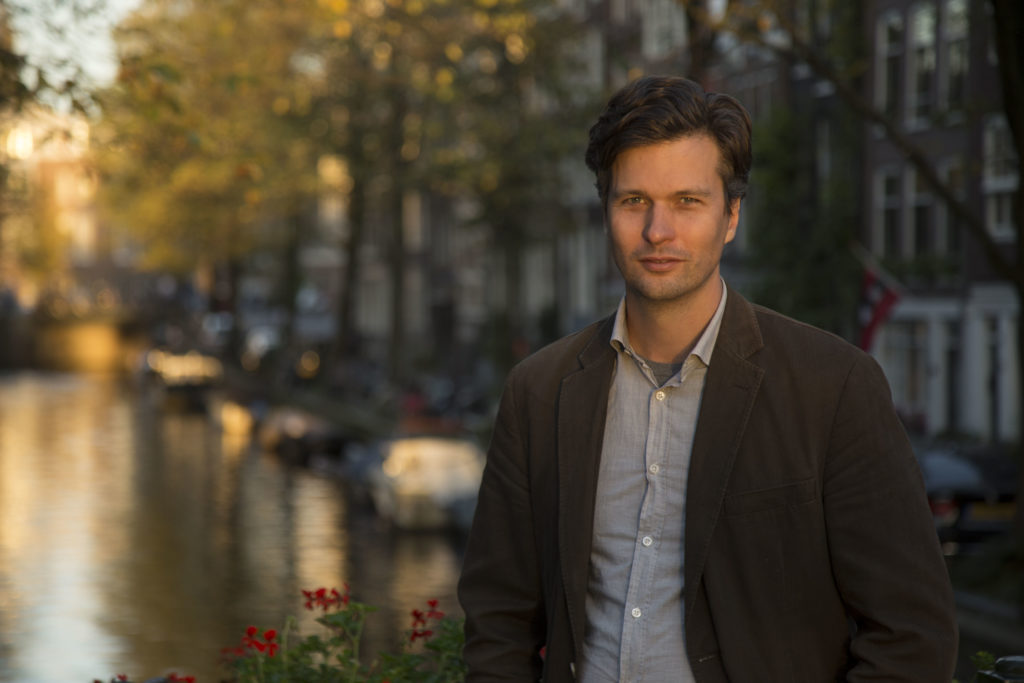Drawing from fifteen years of placemaking experience, Ethan Kent, of Project for Public Spaces (PPS) talks about how placemaking contributes to social capital and city governance, and has launched a new type of environmentalism. We were pleased to speak with Ethan about the importance of public engagement, planning and visioning to create human-scaled public places right outside our door. And, as cities around the world embrace the principles of placemaking, PPS increasingly finds itself at the forefront of making great places to live, work and play internationally.
Open Voices: The opportunity for individuals to jointly shape the collective commons is at the heart of Project for Public Spaces’ work. What human impacts do you notice among people who collaborate to co-create the public realm just outside their door?

Ethan Kent: Certainly the biggest impacts of placemaking are often realized in the process of making places which develops tremendous social capital. We think that perhaps the biggest crisis today is that we’re at a low point in our connection to the public realm and to our participation in the shaping of that public realm. The negative impacts of that show up in many parts of society in terms of isolation and the accompanying effects on rates of depression, for example. The world is developing and changing as fast as ever these days, but how citizens proactively and collectively participate in its shaping for the greater good has become less effective than ever. Too often, the type of resultant development we see reflects that lack of hands-on citizen participation.
Open Voices: Collective stewardship of public spaces as a new form of governance is increasingly creeping in to the public discourse. How does this emergent dynamic intersect with your work?
Ethan Kent: We note that the majority of the success of a public space is attributable to how it’s governed and managed. Increasingly, communities are developing the capacities to re-envision and recreate public spaces, to evolve them and ensure their ongoing success. But, the real challenge here stems from the “siloization” of government itself. There has traditionally been a lack of opportunity for active participation in civic affairs, with citizenship taking a very passive form. Conversely, we are seeing a new focus on sense of place in our shared public spaces, as the most effective and practical way for people to redefine citizenship and governance. We hope it can start to restructure government in a way that makes more great public spaces and a healthy relationship in the world around us possible. And, change is happening. Cities in Australia and many other parts of the world have asked Project for Public Spaces to help them reinvent how city government works, with the goal of creating shared value in the public realm, via placemaking, the role of every department.
Open Voices: You say, environmental activism starts outside your door – in one’s immediate environs – and is often ignored at this personal or human-scale. We couldn’t agree more. It seems there is often a disconnect between what you note as the need for immediate, human-scaled public greenspaces and the ubiquitous larger systems-oriented open spaces and natural resources. How can the compelling need for these human-scale public spaces be elevated and included in the systems-wide scale of looking at cities?
Ethan Kent: To many people environmentalism is an abstract set of issues somewhat disconnected from their immediate environment. We feel the way to activate people’s understanding of these larger environmental concerns, which is indeed important, is to start at the local level in the area around their home, in small ways, to help them see how they can shape it and how it’s shaping them. The human scale, at the place level, or the place scale, is where we find the best opportunity for people to shape our world and it’s been largely ignored by communities until recently. We need to make that scale work and make the ongoing management and activation of those places work.

One tool we use to scale this up to a more systematic approach is an idea we call the Power of 10. A great place has at least 10 reasons to be in it, or 10 things to do in it. This approach moves the conversation away from getting stuck in the physical realm or the aesthetics of a place, which are important, but can be somewhat disempowering to engagement of larger and broader audiences of people participating in the discussion. We find people are really good at identifying what to do in a space and what other uses could be added to a space. The Power of 10 helps develop a programmatic vision for improving spaces. A great neighborhood should have at least 10 places in it, each with 10 things to do in it. Larger yet, a great city or region has at least 10 destinations or districts, each with 10 neighborhoods with 10 places, each with 10 things to do in it. And so on. A place-led approach to civic engagement in turn informs the planning of larger land use decisions, including transportation, at a low-cost point of entry, effectively scaling up the importance of the human-scale place.
Open Voices: Few great public spaces can defend the cost of investing in their creation unless they’re purposefully designed to capture multi-benefits. How do you measure the shared value of place capital?
Ethan Kent: We’ve recently been working in Adelaide, Australia, where they’re developing some new place capital metrics. While there are many measurements already in use and development, we find the best assessments are the qualitative ones that a local community can measure themselves. There is so much value in the actual process of doing the measuring.
Open Voices: As you describe the Natural Evolution of the Green Movement, you note the shift away from celebrating nature as object itself to celebrating “nature as something of which we are a part of.” What role does urban nature play in the creation of the great, multi-benefit public places Project for Public Spaces helps to bring about?
Ethan Kent: The environmental movement has had a much-needed impact on our awareness of nature and the need to impact it less negatively. We recognize nature is not an object unto itself; we are a part of nature not a part from it. So it follows that we’d like to get to a place where we don’t impact the environment negatively but actually impact it positively. Place-making can be that opportunity, offering a framework of continuity for us all to create and envision a world that’s thriving for everyone.
This idea of impacting more, of creating great places that integrate nature in an additive way is the direction we need to keep moving in. Much of the conversation around greening and green and the shaping of public spaces is still this solutionism. It comes from the right place and we do need more green in public spaces. But greening alone isn’t going to get us where we want to be. Integrating greening with the way we all shape our civic and public realm will create more demand for a green infrastructure and nature in our lives.
Open Voices: That brings me to inquiring about one of your newest initiatives, the Placemaking Leadership Council. Can you share an update on the council’s work during the past year?
Ethan Kent: It’s been a busy time. The Placemaking Leadership Council, of over 500 members now from all over the world, kicked off in Detroit last April. Following that, a conference was held in Stockholm, Sweden with a few hundred people from 50 different countries helping to define placemaking as an international movement. We’re doing another one in Buenos Aires this year, and just completed one in Adelaide a few weeks ago. We are also working to influence the discussion at Habitat III, a 2016 UN-wide conference where we’ll be working to make public spaces and placemaking a focus of global development efforts, really bringing it to the next level.
Increasingly, the way change occurs is through networks. The potential for shared learning within inter-disciplinary networks which reach different audiences makes change happen at a much faster rate. It’s an exciting time for seeing how human-scale placemaking can be much larger than any of us, with more and more people joining in to shape this growing movement.

